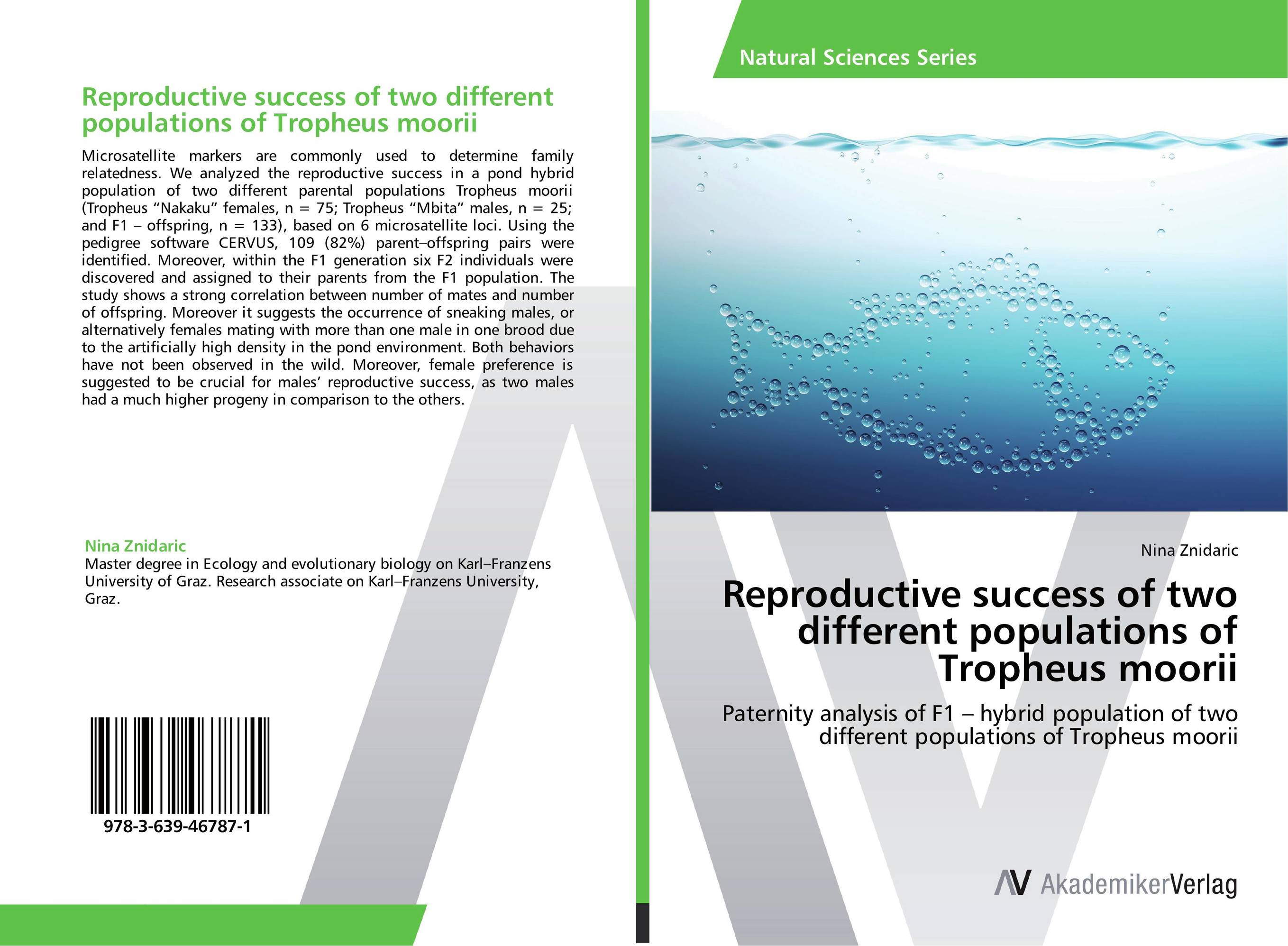| Поиск по каталогу |
|
(строгое соответствие)
|
- Профессиональная
- Научно-популярная
- Художественная
- Публицистика
- Детская
- Искусство
- Хобби, семья, дом
- Спорт
- Путеводители
- Блокноты, тетради, открытки
Reproductive success of two different populations of Tropheus moorii. Paternity analysis of F1 – hybrid population of two different populations of Tropheus moorii

В наличии
| Местонахождение: Алматы | Состояние экземпляра: новый |

Бумажная
версия
версия
Автор: Nina Znidaric
ISBN: 9783639467871
Год издания: 2013
Формат книги: 60×90/16 (145×215 мм)
Количество страниц: 56
Издательство: AV Akademikerverlag
Цена: 16384 тг
Положить в корзину
| Способы доставки в город Алматы * комплектация (срок до отгрузки) не более 2 рабочих дней |
| Самовывоз из города Алматы (пункты самовывоза партнёра CDEK) |
| Курьерская доставка CDEK из города Москва |
| Доставка Почтой России из города Москва |
Аннотация: Microsatellite markers are commonly used to determine family relatedness. We analyzed the reproductive success in a pond hybrid population of two different parental populations Tropheus moorii (Tropheus “Nakaku” females, n = 75; Tropheus “Mbita” males, n = 25; and F1 – offspring, n = 133), based on 6 microsatellite loci. Using the pedigree software CERVUS, 109 (82%) parent–offspring pairs were identified. Moreover, within the F1 generation six F2 individuals were discovered and assigned to their parents from the F1 population. The study shows a strong correlation between number of mates and number of offspring. Moreover it suggests the occurrence of sneaking males, or alternatively females mating with more than one male in one brood due to the artificially high density in the pond environment. Both behaviors have not been observed in the wild. Moreover, female preference is suggested to be crucial for males’ reproductive success, as two males had a much higher progeny in comparison to the others.
Ключевые слова: Evolution, Cichlidae, Microsatellites, Reproductive Success, parentage assignment, Cervus, Hybrids



